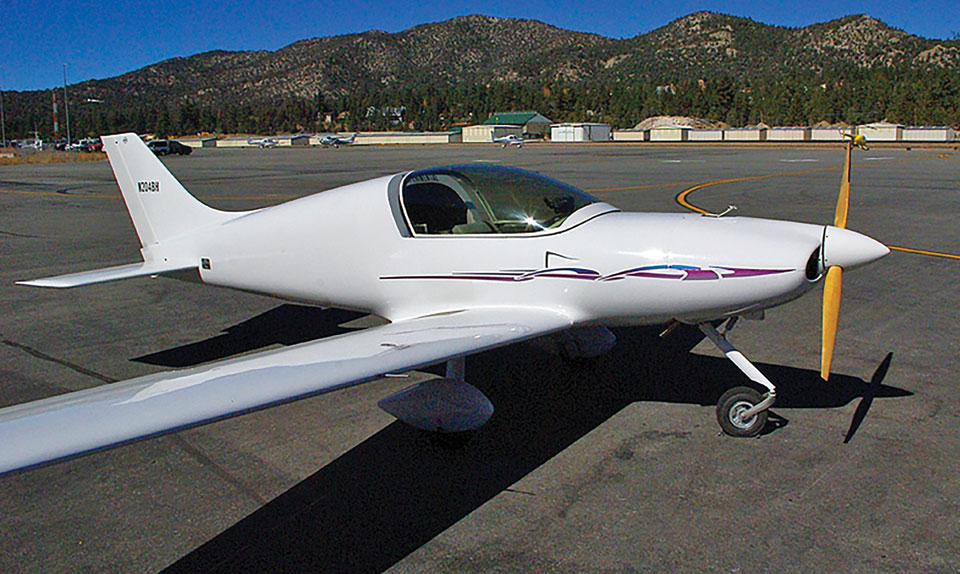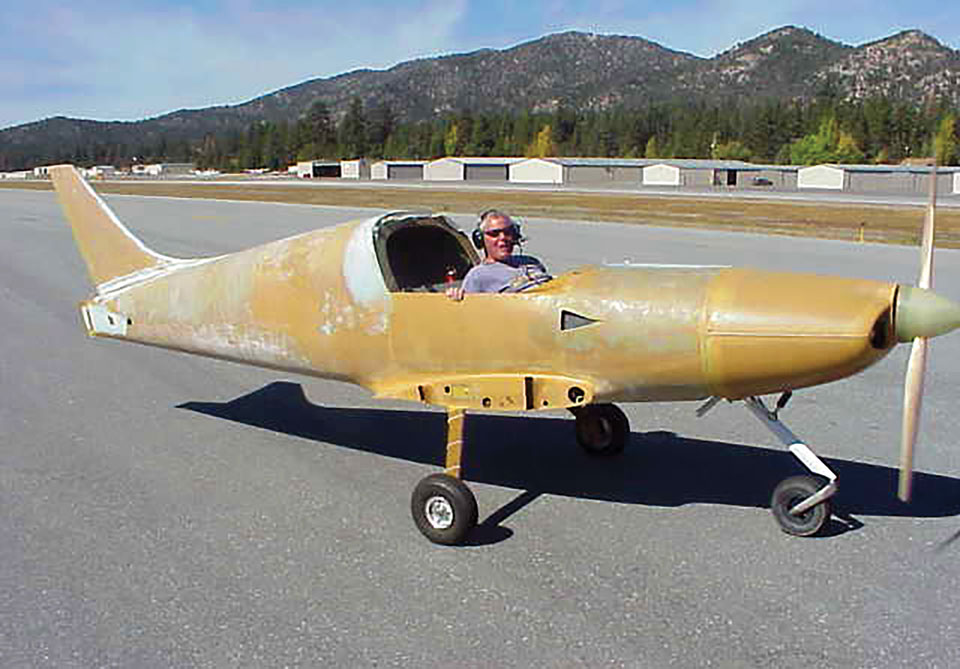Impulse Buy - Pulsar
From March 2016 Sport Aviation
By Bob Hartunian, EAA 549299; Fawnskin, California
March 10, 2016 - Back in 1998, when I was 59 years old, my fiancée ran off, Boeing was downsizing, and I had just bought a retirement home with a terrible, long, steep driveway where it snowed. So what’s a guy to do? Buy a partially built Pulsar kit and put it together on weekends until the other shoe drops, of course!
I had taken a ride in Mark Cook’s Pulsar the year before and liked the aesthetics of its lines. Not owning a plane previously, it seemed that flying fast on low horsepower was good, and having worked with composites for 30 years in aerospace made this a natural fit. The Pulsar uses an 80-hp Rotax 912 engine and flies at 140 mph burning mogas at 4 gph. It is also very tight in width in the cockpit for two normal people and really sensitive in pitch control. But I got used to that and don’t mind any of it now.
One thing about composite kits, compared to aluminum planes, is the reduction in detail parts for the composites. Most large sections, like fuselage and wings, are pre-molded sandwich construction, so stiffeners, frames, and longerons are not required, nor are the jillions of fasteners to hold aluminum parts together. But composites do require both time and temperature to cure properly, so building in winter has its drawbacks in that a heated garage or hangar is required.
Another issue was the collapse of the original kit supplier. Aero Designs had just sold off to SkyStar, and as I got into the building process, it was resold to another owner who wasn’t keen on factory support. This can really be a problem for newbies building a composite plane. But the great owners group for Pulsars stepped up and still gives advice to folks building forgotten kits discovered around the country.
Now, I was a new face at the local airport but did have a rented hangar where I worked each day doing sanding of wings and fuselage sections. When Rutan made the first commercial composite kits, his big mistake was making the surfaces glass smooth. Since then, every composite builder has to have similar surfaces that are only possible with months of sanding and filling and more of the same until you finally stop and say it’s good enough. So I’d be out there every morning with an in-line sander making plenty of dust, and some locals came by and asked what filler I was using. I said it was a polyester resin filler like Bondo. Pretty soon, they started calling me Bondo Bob, and later, just plain Bondo. Names are important.
During the assembly process, I had purchased a used 912 engine and was told how it had to be run ASAP to keep the piston rings happy and the water seal from drying out; all of this was absolutely wrong. The 912 has a ceramic cylinder coating (Nikasil) that’s diamond hard, and ferrous rings don’t corrode in contact with it. And the water seal is also ceramic so it doesn’t degrade with time either. But all this advice came from A&P mechanics, and I believed them, so I wanted to get the engine running quickly before it all turned to garbage.
I installed the engine and wanted to run it for engine preservation and to debug things like hydraulic brakes and wheel tracking. I rigged up a fuel container in the passenger seat with a line to the engine and proceeded to conduct taxi tests at our nontowered airport on the taxiway. I had the comm radio working for safety and was making good progress fixing anything that came to light. One day as I was doing a debugging taxi, a Cessna 172 was coming the other way, and the pilot got on the comm and said, “My God, there’s a plane coming at me with no wings.” I couldn’t resist and replied, “No wonder the damned thing won’t fly, thanks very much.” With that, she pulled off the taxiway and stated that pilots in Big Bear were crazy and she would never come back. I haven’t seen her since.
The Pulsar now has 900 hours on it, and I fly twice a week if weather permits. The 7,000-foot airport has density altitude issues in summer for most planes that drop in, but the Pulsar still climbs at 700 fpm solo and cruises at 140 mph if mountain turbulence is absent. I’ll keep flying it until my piloting time expires and still enjoy tinkering and making “improvements,” some of which actually are.


